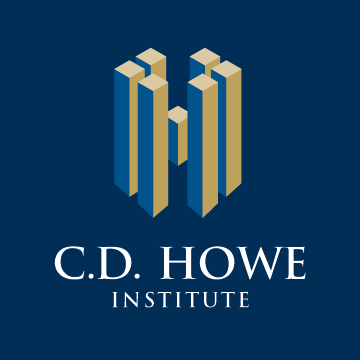Home / Publications / Intelligence Memos / A Better Way to Measure School Performance
- Intelligence Memos
- |
A Better Way to Measure School Performance
Summary:
| Citation | David R. Johnson. 2025. "A Better Way to Measure School Performance." Intelligence Memos. Toronto: C.D. Howe Institute. |
| Page Title: | A Better Way to Measure School Performance – C.D. Howe Institute |
| Article Title: | A Better Way to Measure School Performance |
| URL: | https://cdhowe.org/publication/a-better-way-to-measure-school-performance/ |
| Published Date: | September 19, 2025 |
| Accessed Date: | November 6, 2025 |
Outline
Outline
Related Topics
Files
From: David R. Johnson
To: Ontarians Concerned About Education
Date: September 19, 2025
Re: A Better Way to Measure School Performance
There is a great deal of variation in Ontario school performance as measured by the assessments of literacy and numeracy administered by the Education Quality and Accountability Office (EQAO) at the end of Grade 3 and the end of Grade 6.
Everyone knows that student learning is a partnership of the influence of the home as well as the teachers and staff at the school. How can parents, teachers, taxpayers and school administrators know if children are attending a “good school,” where the staff are making the appropriate contribution to student achievement?
My latest C.D. Howe Institute paper offers answers – with results for every school and board in the province – using a methodology that screens out the influence of socio-economic factors on student performance on Ontario’s standardized tests. This identifies schools that perform better, or worse, than other schools with students of similar backgrounds.
The most recent study covers the three years of EQAO assessments after Covid in 2022, 2023, and 2024. At each school there is a pass rate expressed as a percentage of all students in that grade over the three years. But the raw pass rates only tell us so much.
Why? Because the schools where more students come from homes that offer students the most advantages will usually have the highest success rates. Accordingly, most educators realize that to rank schools by overall success rates would tell us little about the quality of staff at any given school. Raw pass rates can be very misleading measures of staff effort and ability.
The Ministry of Education provides, on request, social and economic variables that describe Ontario schools. The two most important variables for measurement of family influence on student outcomes are the percent of parents with some university education and the percent of lone-parent families in a school although other variables also matter. As the data are linked to the schools, it becomes apparent that about 30 to 40 percent of the variation in school success rates is associated with variation in the social and economic background of students. So we can judge whether a school appears to be performing above or below average by focusing on the statistical variation that remains after accounting for the influence of these socio-economic variables.
This comparison is fair to teachers and principals, because it is made only after separating out the effects of the students’ characteristics who attend that school.
To draw attention to the most outstanding and least outstanding schools I assigned letter grades to the top 2.5 percent of schools, an A, and the bottom 2.5 percent of schools, an F. Schools with a grade of B lie in the top 13.5 percent but not in the top 2.5 percent of schools. School with a D lie in the bottom 13.5% of schools but not in the bottom 2.5 precent.
The vast majority, 68 percent, receive the average grade of C. The purpose of such narrow definitions of A, B, D and F is to identify schools where we could emulate the identified good schools and avoid the practices at weaker schools.
This assessment system allows us to say that among schools there is a meaningful variation in teaching quality.
A parent with children at a school with a low letter grade could and should expect better results and talk to school and board staff about why they are not getting them. This may be the case even raw pass rates are quite high.
These indicators, together with all the social and economic data that describe a school, are available at the C.D. Howe Institute website, and they can find their school on a map and see its letter grade in each assessment.
Another issue raised in the report is that Grade 6 students who enter a middle school teaching Grades 6, 7 and 8 do systematically worse on both Grade 6 assessments than students who do not make this transition. Making this transition appears to be costly to these students.
The separate schools also produce systematically better results in both Grade 3 literacy and numeracy, and Grade 6 literacy – but not Grade 6 numeracy. Why?
The report addresses how much influence boards have on school-level results within their board. The answer is, in general, relatively little. Most boards are average. But the three French speaking boards as well as the District School Board of Niagara and the Windsor-Essex Catholic District School Board produce strong results. The question again is why are these boards so strong?
One final interesting observation: None of the five boards recently placed under provincial control are revealed to produce anything but average results. Whatever decisions these boards made about their finances did not lead to better student performance.
David R. Johnson is Emeritus Professor of Economics at Wilfrid Laurier University and Education Policy Scholar at the C.D. Howe Institute.
To send a comment or leave feedback, email us at blog@cdhowe.org.
The views expressed here are those of the author. The C.D. Howe Institute does not take corporate positions on policy matters.
Want more insights like this? Subscribe to our newsletter for the latest research and expert commentary.
Related Publications
- Opinions & Editorials
- Opinions & Editorials

